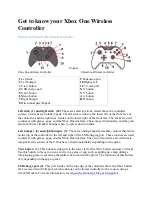
SINEWAVE GRINFINEON CONTROLLER MANUAL
Rev 2.1
-9-
2.3
Sensored vs. Sensorless
While the Grinfineon controller will work sensorless with the hall connector
unplugged, there are several limitations to this mode.
•
Starting from a standstill can be a little bit jerky while the controller
attempts to self start the wheel.
•
The controller will operate in a trapezoidal rather than the more silent
sine wave mode, resulting in some audible buzz or hum from the motor.
•
With high gear reduction geared hub motors, you may hit the sensorless
eRPM limit of the controller (~28000 eRPM, see 4.1)
•
When using a Cycle Analyst, you won't have the option of picking up the
speed signal from the motor hall line and will require an external speedo
sensor and spoke magnet (i.e. CA-DPS or CA3-DPS).
If the motor has hall sensor wires, then we recommend connecting them to the
controller as well so that you can benefit from sensored sinusoidal operation.
The hall sensor plug has 5 wires, red and black supply power to the hall sensors
in the motor, and the yellow, green, and blue wires carry the resulting hall
signals.
Figure 8: Hall Signal Plug
2.4
Hall / Phase Mapping Procedure
Previous generations of Grinfineon controller had the ability to automatically map
the hall and phase wires so that the exact pinout details did not matter. This was
very convenient but it is no longer possible with the addition of sinusoidal
sensored mode. It is essential that the hall and phase pinout is correct.
The hall and phase pinout mapping on the SineWave Grinfineon controller is
consistent with how both eZee and Crystalyte motors choose their colour coding,
and they can be matched yellow to yellow, green to green, and blue to blue.
Other popular motor series use a different colour interpretation, and some trial
and error is usually needed to determine the correct pinout.





































